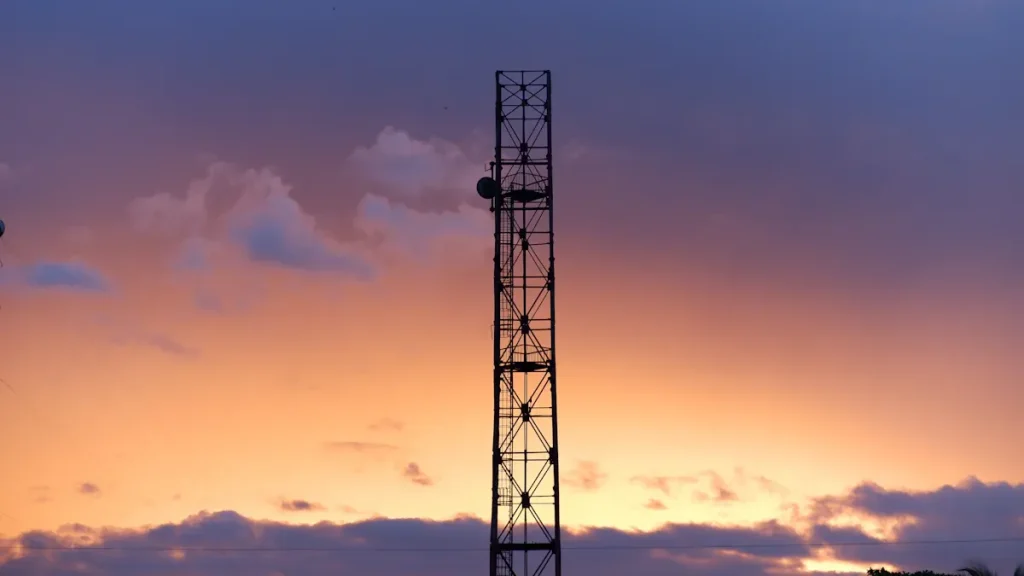How to Choose the Right Mobile Antenna Tower in 2025
2025-06-07
In today's busy world, staying connected is very important. Mobile antenna towers help us communicate easily, especially as mobile data use grows.
By 2023, there are over 153,400 cell towers, 244,800 big cell sites, and 202,100 small outdoor cells working. This strong network shows how important they are for staying connected.
People are using more data every year. Mobile traffic is expected to grow 25% each year for the next five years. To handle this, the telecom tower market will grow from $56.68 billion in 2024 to $61.12 billion in 2025. Picking the right mobile antenna tower helps you keep up with this fast growth.
Key Takeaways
- Think about your coverage needs before picking a mobile antenna tower. Check the area size, number of people, and things blocking signals.
- Look at frequency band support to match your network. Pick towers that work with many bands for better connection and flexibility.
- Choose a tower height that improves signal reach. Taller towers cover bigger areas and fix weak signal spots.
- Pick strong materials to make the tower last longer. Use galvanized steel or concrete to handle bad weather and heavy use.
- Plan for future upgrades by picking towers ready for 5G. This saves money and keeps your network working well as tech changes.
Understanding Your Needs
Picking the right mobile antenna tower starts with knowing what you need. Think about coverage, frequency support, and system setup to ensure strong signals and lasting performance.
Coverage Needs
Coverage is very important when choosing a mobile antenna tower. Cell networks overlap to reduce dead zones, but things like hills, buildings, and weather can weaken signals. For example, towers are often placed in hexagon patterns for even coverage, but radio waves spread in circles, leaving some gaps.
To figure out your coverage needs, ask yourself:
- How big is the area you want to cover?
- How many people live there, and how much data will they use?
- Are there obstacles like trees or buildings blocking signals?
Knowing these things will help you pick a tower that fits your location.
Frequency Band Support
Frequency band support makes sure your tower works with your network. Phones connect using certain frequency bands. If the tower doesn’t support them, calls might drop, or data could be slow.
Here’s what to remember:
- Phones must match the carrier’s frequency bands to work well.
- Towers that support many bands give better connections and options.
- Knowing the bands helps users switch carriers without buying new phones.
Focus on frequency band support to avoid problems and keep users happy.
Working with Current Systems
Your tower should work with your current systems to stay efficient. As people want faster internet, new tower tech is becoming more important. For example, 5G towers handle more data and keep speeds high.
The telecom market shows this growth. In 2024, base station antennas were worth $24.7 billion, and they’re expected to grow 7.3% yearly from 2025 to 2034. More smartphones and 5G expansion drive this change. Also, AI and smart devices improve energy use and data safety.
When picking a tower, make sure it fits your systems and can handle future upgrades. This way, you’ll stay ready for new tech changes.
Key Features of a Mobile Antenna Tower
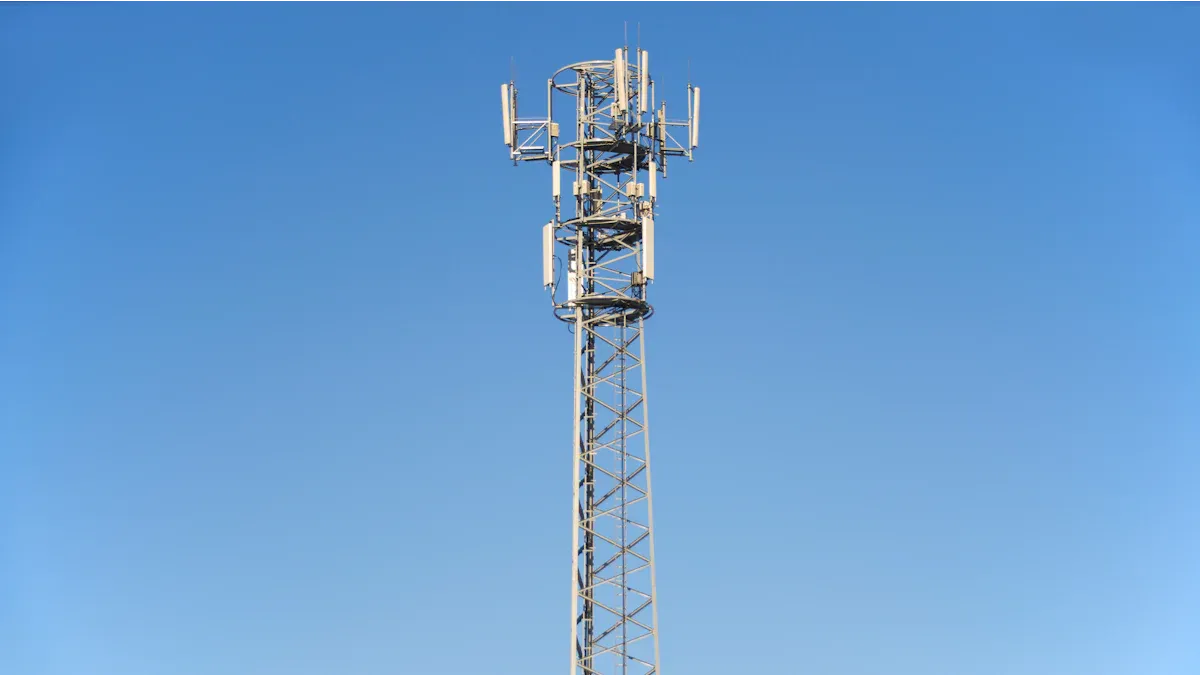
Antenna Type and Design
The type of antenna affects how well the tower works. Different designs, like lattice or monopole towers, have unique uses. Lattice towers are strong and hold many antennas, great for busy areas. Monopole towers look nice and fit in cities where looks matter.
Think about how antennas are built. Some towers handle many frequencies and technologies. This makes them flexible for changing needs. When picking a design, consider costs and how it fits the area.
Tower Height and Signal Range
A tower’s height affects how far its signal reaches. Taller towers send signals farther and cover bigger areas. For example, doubling a tower’s height gives a 6 dB signal boost. A 300-meter tower can cover 5.3 times more area than shorter ones.
The table below shows how height improves signal range:
| Aspect | Details |
|---|---|
| Project | SuperCell |
| Test Locations | Amarillo, Quad City, Metcalf |
| Tower Height | Up to 300 meters |
| Coverage Range Advantage | 5.3x range boost from 29 dB height and antenna gain |
| Antenna Gain | Up to 29 dBi in the 2,500 MHz band |
| Propagation Advantage Rule | Doubling height adds 6 dB, giving 18 dB from 30m to 240m |
| Capacity Scaling | Better scaling with less interference |
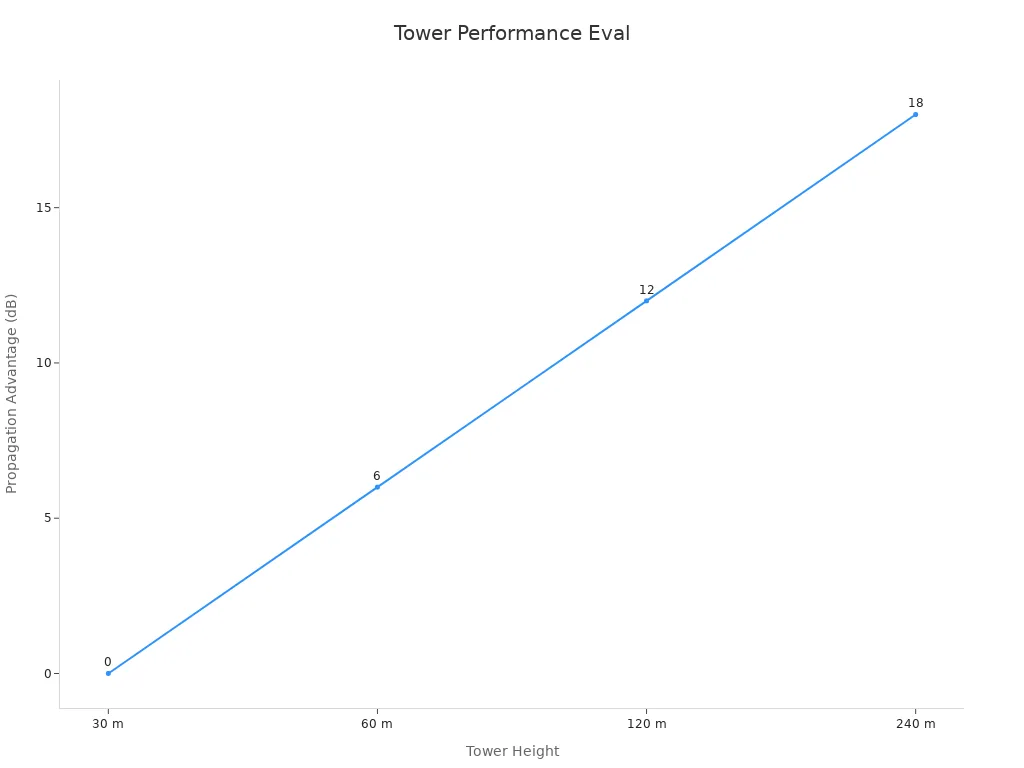
Choose taller towers to cover more area and avoid weak spots.
Material Strength and Weather Resistance
The materials used in towers decide how long they last. Galvanized steel and concrete resist rust and bad weather. They handle heat, wind, and rain, keeping the tower working in tough conditions.
Check if the tower can hold heavy equipment. Strong towers carry more antennas without breaking. Using good materials makes towers last longer and need less fixing.
Focus on strong materials to keep your tower working in any weather.
Future-Proofing Your Mobile Antenna Tower
5G and Emerging Technology Readiness
Getting ready for 5G keeps your tower useful for years. 5G needs more antennas because it uses higher frequencies. These frequencies don’t travel far, so towers must be closer to users. To keep strong signals, many small towers are added to networks.
📌 Tip: Pick towers that work with 5G and new tech. This saves money on upgrades and keeps connections smooth as tech changes.
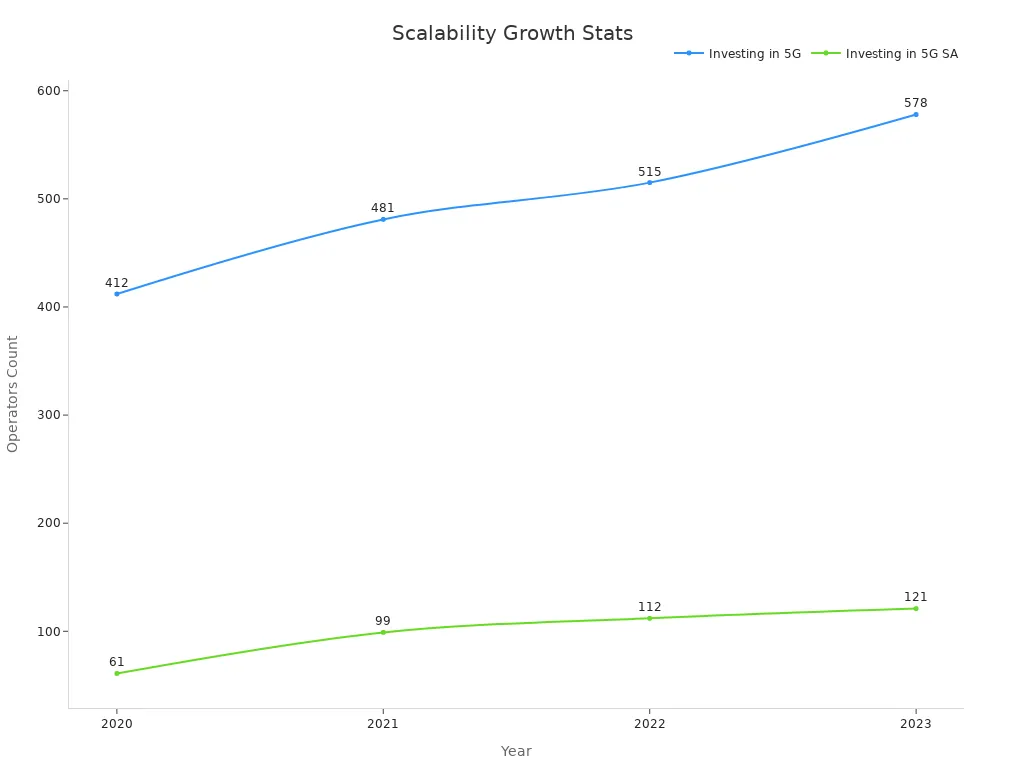
Scalability for Network Growth
Scalability helps towers handle growing data needs. Mobile data use grows every year. For example, global data traffic rose from 11.51 exabytes in 2017 to 77.49 exabytes in 2022. Towers must manage this growth without slowing down.
| Year | Global Mobile Data Traffic (Exabytes per Month) |
|---|---|
| 2017 | 11.51 |
| 2018 | 19.01 |
| 2019 | 28.56 |
| 2020 | 40.77 |
| 2021 | 56.8 |
| 2022 | 77.49 |
More companies are investing in 5G. The number of operators grew from 412 in 2020 to 578 in 2023. Towers that allow upgrades and extra antennas make it easier to meet these needs.
Compliance with Industry Standards
Following industry rules keeps towers safe and reliable. TIA-222 standards ensure towers are strong and weather-resistant. These rules help towers survive bad weather and heavy use. Regular checks based on TIA-222 find problems early and prevent failures.
📌 Note: Always check if your tower meets the rules. This protects your tower and keeps services running smoothly.
Installation and Maintenance Best Practices
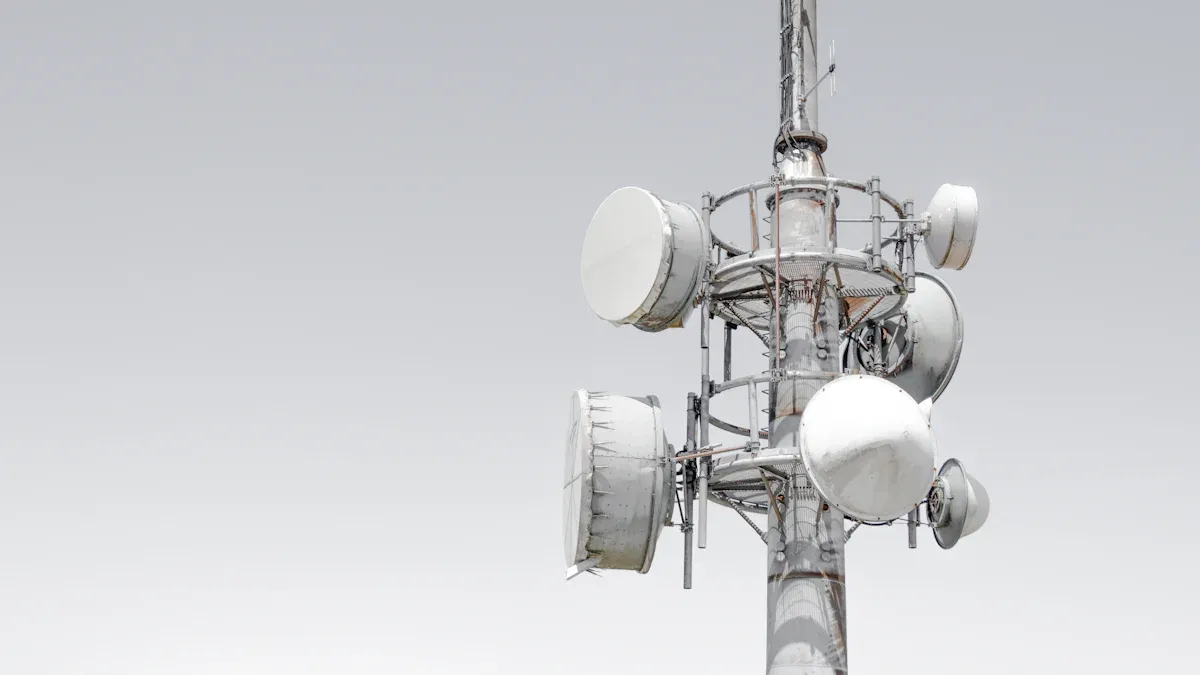
Best Placement and Location
Putting a mobile antenna tower in the right spot is key. It helps keep signals strong and reliable. Look at both natural and technical factors before setting it up. Mountains, trees, or thick bushes can block signals. Materials like concrete or metal in buildings can weaken indoor signals. RF path studies and surveys help find the best height and setup for the antenna. Mapping the land shows the best spots and expected signal strength.
| Factor | Description |
|---|---|
| Natural barriers | Mountains, hills, and thick trees can block signals. |
| Building materials | Concrete, metal, and special glass can weaken signals. |
| Distance from tower | Signals get weaker the farther you are from the tower. |
| Network traffic | Busy towers during peak times slow down signals. |
| Factor | Description |
|---|---|
| RF Path Studies | Check signal paths and strength before setting up. |
| RF Path Surveys | Measure signal quality, antenna height, and other key details. |
| Terrain Mapping | Map the land to find the best spots for towers. |
| Antenna Setup | Pick the right antenna type, height, and frequency to avoid interference. |
Keeping the Tower Safe
Safety is very important when setting up and taking care of towers. Follow OSHA rules and train workers properly. Workers above 25 feet must use safety gear to prevent falls. Check equipment daily for any damage. Tower owners should make sure contractors follow safety rules and inspect worksites often.
- Follow OSHA rules to keep workers safe.
- Use safety gear for work above 25 feet.
- Check equipment every day for damage.
- Make sure contractors follow safety rules and inspect sites.
Regular Maintenance and Checks
Regular care keeps towers working well. Plan yearly checks and do more in tough weather areas. For example, lattice, guyed, monopole, and hidden towers need checks every 3-5 years. In bad weather, check them more often. Look at the tower’s structure, antenna position, grounding, and cables. Fixing problems early saves money and keeps the tower running.
| Tower Type | Maintenance Frequency | Special Conditions |
|---|---|---|
| Lattice | Every 3-5 years | More checks in bad weather |
| Guyed | Every 3-5 years | More checks in bad weather |
| Monopole | Every 3-5 years | More checks in bad weather |
| Camouflage | Every 3-5 years | More checks in bad weather |
- Plan yearly checks.
- Do extra checks in tough weather areas.
- Inspect the structure, antenna, grounding, and cables.
📌 Tip: Keep detailed records of all maintenance to track issues and performance.
Picking the right mobile antenna tower means knowing what you need. Look at important features and plan for future upgrades. A future-ready tower can handle new tech like 5G. Regular care keeps it working well and safe to use. Good quality and strong design are very important. Weak towers can cause problems and risks.
A study in Environmental Research by biologist Alfonso Balmori showed that 73.6% of studies found health effects from base station antennas, like radiofrequency sickness. This shows why strong, reliable towers are needed to lower risks.
Choose a strong and flexible tower for safe, lasting connections.
FAQ
How tall should a mobile antenna tower be?
The height depends on how much area you need to cover. Taller towers, over 200 meters, send signals farther. In cities, shorter towers work better to avoid interference and fit the surroundings.
How can I keep my tower safe in bad weather?
Use strong materials like galvanized steel or concrete for the tower. Check it regularly to find and fix weak spots. Follow rules like TIA-222 to make sure it can handle tough weather.
Can one tower work with different frequency bands?
Yes, many towers can handle multiple frequency bands. This makes them work with different devices and carriers. It also helps them stay ready for new tech like 5G.
How often should I check my mobile antenna tower?
Inspect towers every 3-5 years under normal conditions. In bad weather areas, check them more often. Look at the structure, antenna position, grounding, and cables during inspections.
What affects a tower’s signal strength?
Signal strength depends on the tower’s height, antenna type, and location. Things like hills, trees, or concrete buildings can block signals. Do RF path studies to find the best spot for the tower.

Hey, I’m Chunjian Shu
"X.Y. Tower: Reliable, innovative solutions for high-quality towers and electrical equipment with professional service.

